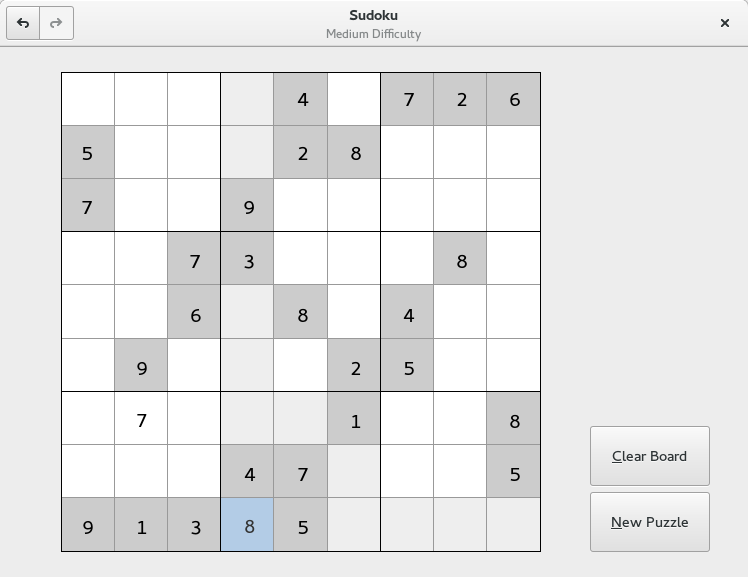Sudoku

Sudoku is a Japanese logic game that exploded in popularity in 2005.
GNOME Sudoku was originally programmed in Python by Thomas Hinkle, though it has since been rewritten. It is meant to have an interface as simple and unobstrusive as possible while still providing features that make playing difficult Sudoku more fun.
Screenshot

Features:
- The board and numbers automatically resize when you resize the window.
- The game is easily navigable from the keyboard -- you can use arrow keys to move around and then just type the number to fill in the board.
- The game is easily playable with the mouse. Clicking on a square will highlight it. Clicking on the square again will show you a grid with the numbers 1 through 9; you can just click on a number to choose it.
- You can add notes or "earmarks" to squares easily by right-clicking, or with the keyboard by tying a number while holding Control.
Saving, Printing
- Games are automatically saved when you quit so you don't have to worry about saving games. Sudoku will reload your last game the next time it starts.
- GNOME Sudoku automatically generates new puzzles when needed, unlike some Sudoku games with a limited number of puzzles.
- Each game is assigned a difficulty score, and you can select games by difficulty.
- If you like to play on paper, you can print games out. You can choose how many games you want to print per page and what difficulty of games you want to print: as a result, GNOME Sudoku can act a renewable Sudoku Book for you.
Getting in Touch
Development Resources
Git: git clone https://gitlab.gnome.org/GNOME/gnome-sudoku
